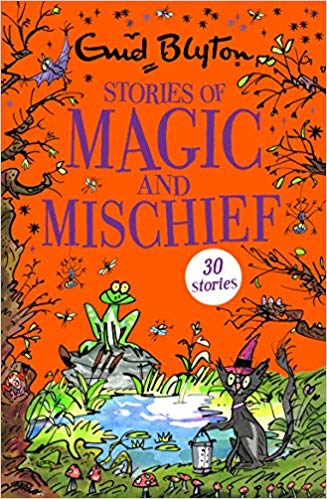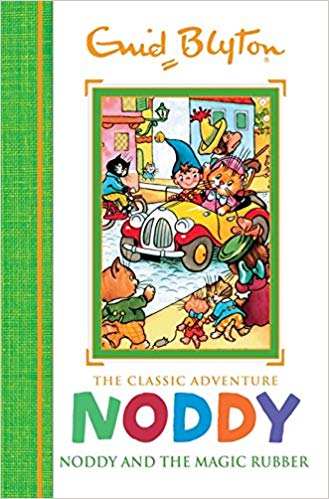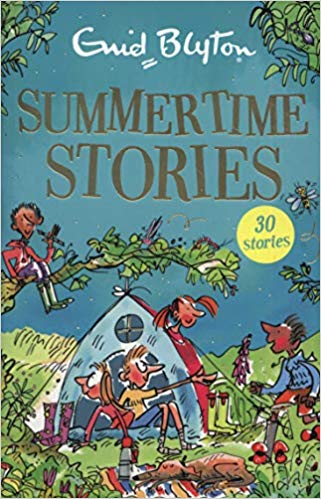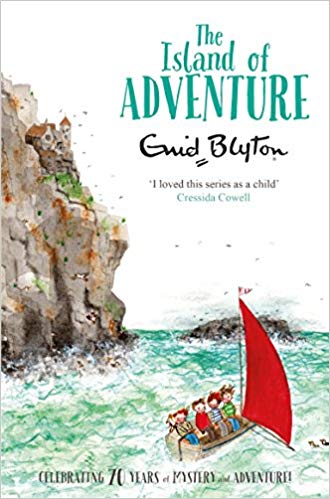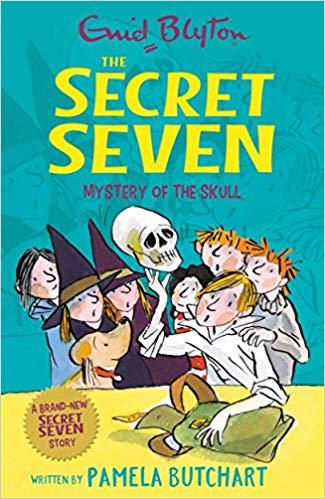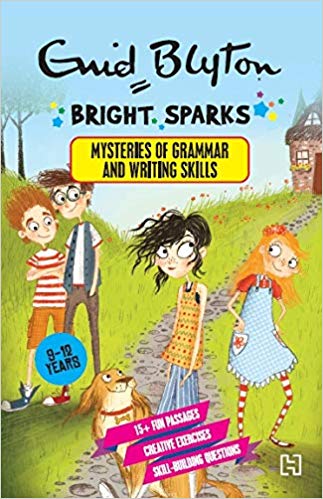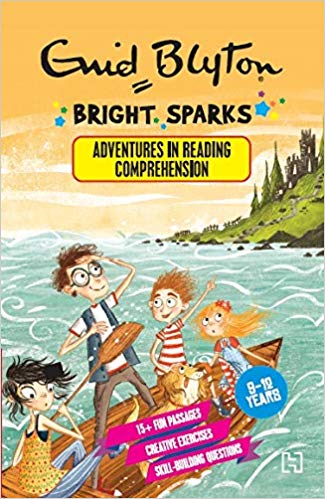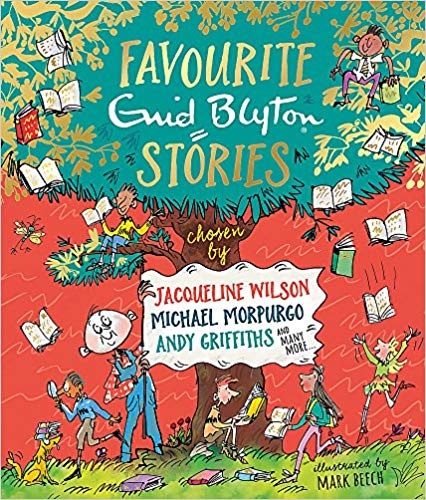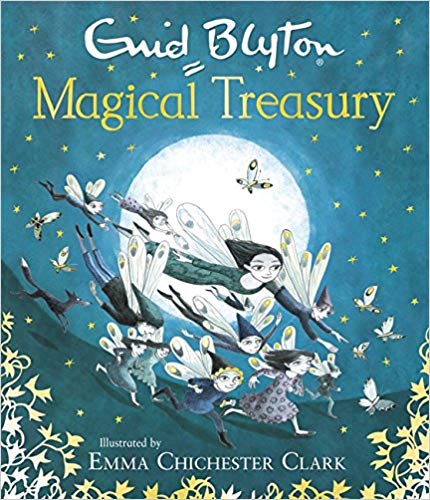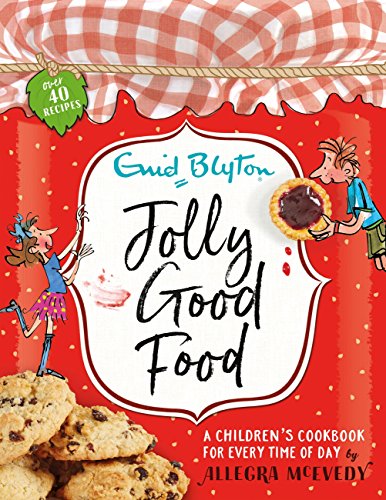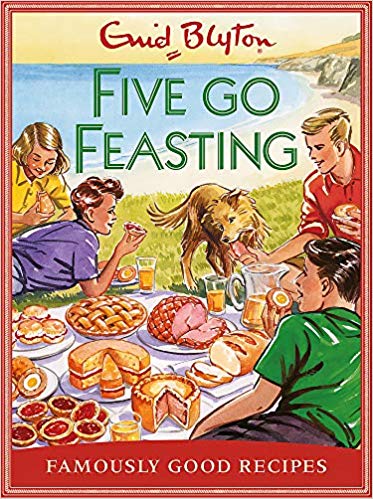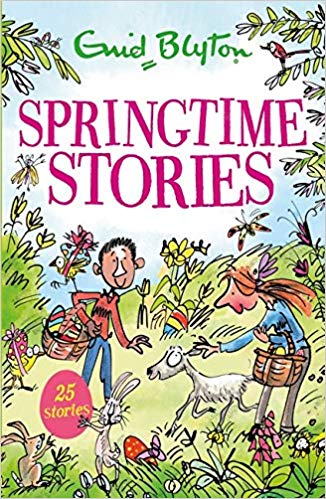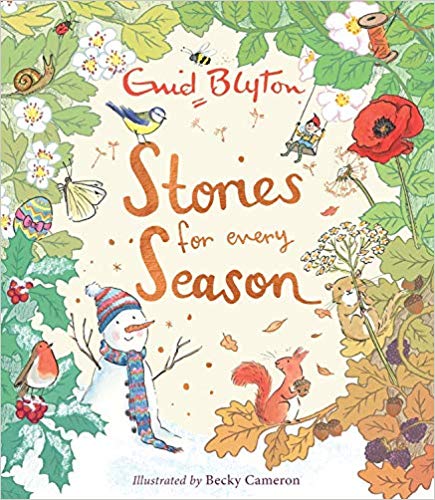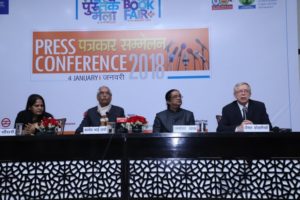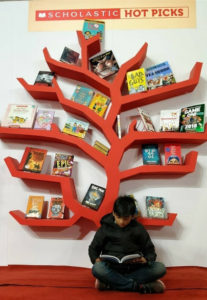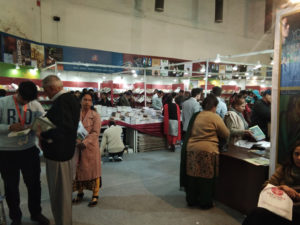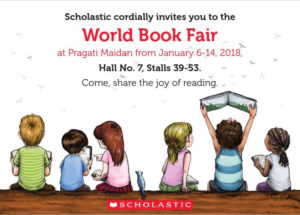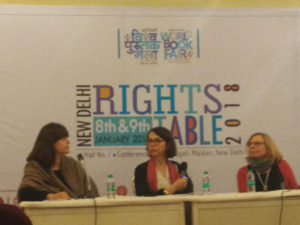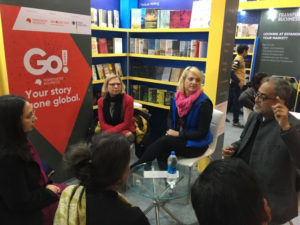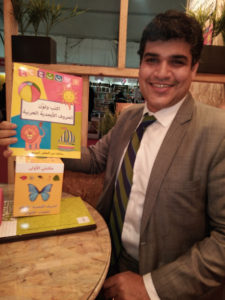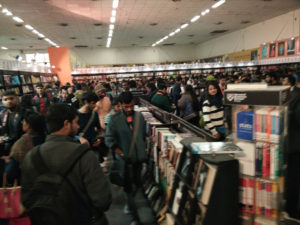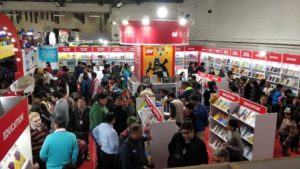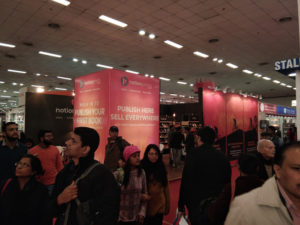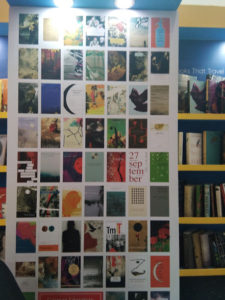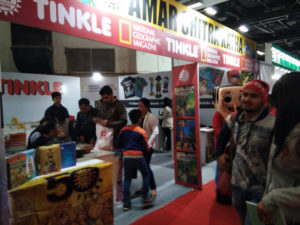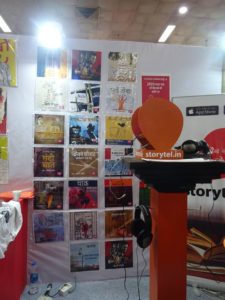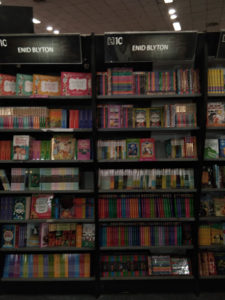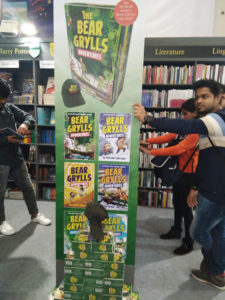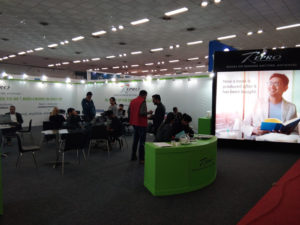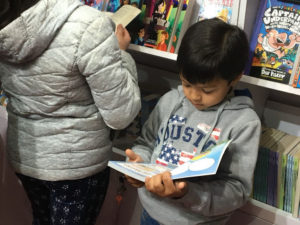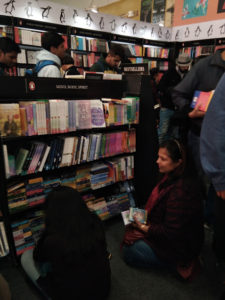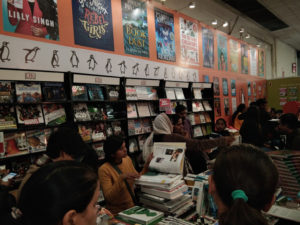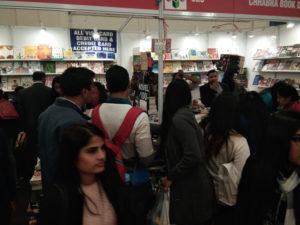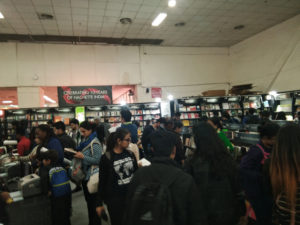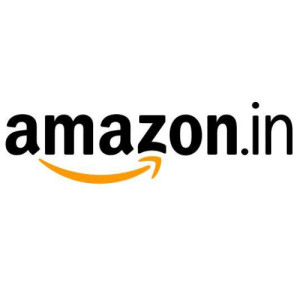Interview with Thomas Abraham, MD, Hachette India on publishing Enid Blyton’s books
For some time now I have been seeing some wonderful new editions of Enid Blyton’s books published by Hachette India. Sometimes collections of short stories that I did not even know existed. Sometimes rejacketed versions of old faithfuls. At other times newly put together anthologies of extracts from Enid Blyton’s books or well-known children’s writers selecting their favourite extracts. And then there are the recipe books appealing to the adults who are nostalgic about the delightful eats Blyton mentions in her books while at the same time catering to the young readers who are fascinated by popular cooking programmes on television. Finally, there are examples of Enid Blyton’s stories being used to create grammar books for school children in the subcontinent.
Thomas Abraham, MD, Hachette India kindly agreed to a Q&A on publishing Enid Blyton’s books.
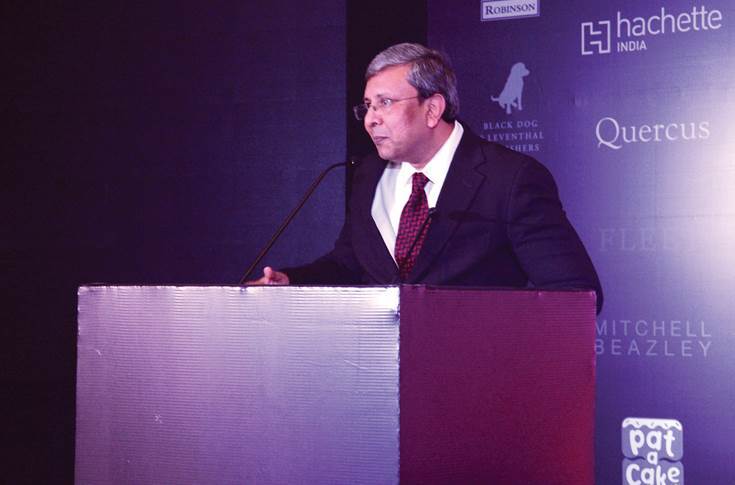
******
- How did the tie-up with Enid Blyton’s literary estate and Hachette happen?
There is no tie-up. Hachette is the estate now, having bought up the rights in March 2016. So Hachette now owns the copyright to all of Blyton’s work, except I think Noddy, because that was pre-sold by the estate earlier. Just like rights to the adventure series are pre-contracted to PanMacmillan… so those will remain in place for contract validity. How it began is from our history. We were Blyton’s first publishers in the 1930s and have published her continuously since then.
2. Is the contract meant only for the revival of the backlist?
No it’s for whatever we want to do. As mentioned, we own the copyrights from the signing of the agreement with the estate where we are the new copyright holders in an outright buy out.
New copyright answered below would depend on what the authors chose—one-time fee or royalties and assignment or transfer. I don’t know that offhand, but the copyright page of any of the new books will state that.
3. Some of the more popular series such as Secret Seven are being expanded with modern storytellers. Why?
That’s common for most very successful brands, not just Blyton. From Bourne to Bond, to Asterix, to Sidney Sheldon, Margaret Mitchell, Jane Eyre…further extensions through sequels, prequels, and line extensions have always been there. And it’s not just Secret Seven, Malory Towers has extensions too. The Naughtiest Girl and Malory Towers had them over 15 years ago. As to why—simply to contemporize it for current readers…reflecting today’s realities and cultural milieu. So Malory Towers now has an Indian writer with an Indian girl student joining the school. And no this was not done for India—this is to mirror British society which is much more multi-cultural today.
4. Who holds the copyright for these new stories? The commissioned author or the literary estate? What have been the immediate impact of this collaboration between Enid Blyton and Hachette?
This will be the choice of the new writers—they could opt for one-off copyright sale, or royalties. (So it may vary and I’m not sure, but a look at the copyright page will tell you)
5. a. Enid Blyton’s stories are representative of the age she wrote in. So her references to “Golliwog” or her sexist representation of gendered activities would not be appreciated in contemporary times. Yet she has made a surprise comeback with many appreciating her books.
Perhaps because too much has been made of that bit is my belief. Almost every single English reading adult has grown up on these tales, and they haven’t turned out racists. This comes up from time to time, but is definitely not true when blanketed together like that. Let’s take them one by one.
There is certainly no sexism in her books… seen in the context of today they may not be stridently feminist (Anne being a homebody, is equally complemented by George being the main heroine of the Famous Five series; and the school series all have strong protagonists). Yes, there are stereotypes which existed in that time (of roles boys and girls play) and are there in most books of the era whether adult or children—from Sherlock Holmes, Agatha Christie. The racism question arose because of the golliwog toy in Noddy being analyzed in that context, which has since in the wave of political correctness been removed as I understand it, but certainly there is no derogatory text anywhere that can be called racist. Our current Hindi mass market cinema is far more racist, misogynist and xenophobic. Coming to xenophobia — hardly any of the books have foreigners, and if they appear as villains (Adventurous Four, the Adventure, the Secret Series) that is because of the setting and character; and inevitably there are balancing good characters from the same country. And statistically there are obviously more British baddies. Snobbery is shown as a clear negative in most of her didactic books, and those snobs always get their come-uppance.
It’s not as though there are not issues or problems… but they are issue of the time they were written in and do not I believe have any sort of impact—given the millions across the world who have grown up on her books. In fact, her books are very strong on the whole ‘moral values’ of the time—almost to the point of ‘preachiness’—which may be one reason they are so popular in India. Honesty, integrity, loyalty, bravery, courage—a veritable textbook of moral values. No matter that some of them like ‘British pluck’ may be outmoded. But what makes her still relevant and in demand is that she is one of the greatest storytellers in the world with an amazingly prolific output and makes children happy.
5 b. Have the Enid Blyton books been edited for a newer audience? If so what are the principles governing the editing of Enid Blyton’s backlist?
Yes, or updated rather. Plotlines have not been interfered with; and Blyton is fairly timeless. Her stories stay universal because there isn’t too much datable about them. she doesn’t for instance name brands in her detailing. Cars for instance may be described as a “big black car, with a powerful engine” not a Rolls or Morris which would immediately date it. so what has been tweaked is very archaic usage—pinafore for uniform tunics, pullover for jumper etc. In fact the reverse happened when the Famous Five were experimented with…in almost a classic coke vs New Coke backlash the new text was not welcomed; and the old one was reinstated.
6. Do you have cultural sensitivity readers for Enid Blyton’s stories before releasing them? Do different markets have different teams supervising the release or is there a specific team overseeing the global release of Enid Blyton books and product lines?
A mix of both—it’s primarily central in the Blyton Estate team based at Hachette UK, and we are asked for input when needed. And we create new product for our markets. In India we’ve begun a new non-fiction stream for instance. Essentially the legacy is continued as classic children’s fare with not much being done to change existing stories. New stories are done factoring in multi-cultural societies of today. And the continuations of her series—there are new secret seven, wishing chair, and Malory Towers stories in contemporary settings which are much more multi-cultural… the latest one even written by Narinder Dhami and featuring an Indian character.
7. Some of the new and fascinating array of collateral from this tie-up have been the cookery books and the English comprehension and grammar books. Why and how did Hachette decide to diversify the Enid Blyton portfolio? How have readers’ responded to the new range of books?
The grammar, vocabulary and other educational collateral was our idea and exists only in India. I felt that since we owned the brand and the fact that Blyton was one of the best teachers of English you could have…it would be remiss of us not to publish a breakaway stream of non-fiction using the texts. The series were just released last year. It’s early days, and this series will require school channel distribution not just trade, so we’ll know in a couple of years how they fare.
8. Do Enid Blyton’s imaginative stories translate well into other languages? If so, which are the languages that are most receptive to her books?
Because the storylines and plots are so good, they certainly would translate well just on those terms. Yes, the amazing use of English language which is the other great part, would be lost. Yes, she’s been translated into over 90- languages. So they are all over including Sinhala.
9. Will Hachette ever republish Enid Blyton’s autobiography The Story of My Life?
Not on current schedules which is in the first instance republishing all her fiction output. The non-fiction and memoirs will follow.
10. Indians enjoy reading Enid Blyton’s stories. But ever since the revivial of her backlists, has there been a noticeable surge in sales? Also is it possible to discern whether the newly commissioned stories are preferred to the original Enid Blyton stories or does that not matter?
Enid Blyton has always been a huge seller. The famous Five sell over half a million copies every year, of which India’s share is about 35%… so while that is fantastic, it should also correct the erroneous impression that she sells predominantly in India. The newly commissioned stories join the others so get similar sales, but the original canon still sells just that bit more.
The UK is a very front list market (meaning new books), so while she sells very well (her sales there are still higher than sales in India) she may not rank in the current top five children’s authors for instance. But even recently in a UK poll, she was voted as the most popular children’s author of all time beating Roald Dahl and JK Rowling.
India is still a throwback market, relying on traditional favourites and backlist (older books) is very strong. And Enid Blyton here is still in the top three after recent bestsellers Geronimo Stilton and Jeff Kinney. And this is over 70 years after these books were published.
For context it must be understood that the core and basic readership in the UK or USA is very wide, unlike India where it is minuscule. We also react to the top trends in the world, so Harry Potter, twilight, Hunger games, wimpy kid will make it big here too. But the next level or a wider range of books gets very little exposure—whether they be international books or home grown books.
11. Are any film / TV adaptations of Enid Blyton’s stories to be expected soon? If so which ones are the most likely to be created first?
Yes, there are a couple in the pipeline though I don’t have details. From the 1940s, every decade has seen a movie or TV series made of the main series. Next year will see Malory Towers from the BBC.
12. How significant is the audiobook market for Enid Blyton’s books?
Not very significant. The audiobook revolution was in the adult market. I’m not aware of the children’s segment audio. There the experimentation is in book and sound formats. very few standalone audiobooks that I know of.
20 Dec 2019

